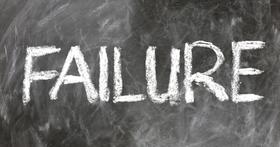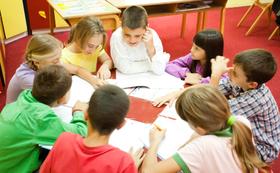Top Rankings
Klamath-Trinity Joint Unified School District ranks among the top 20% of public school district in California for:
Category
Attribute
Student Attention
Lowest student-teacher ratio (Top 1%)
For the 2025-26 school year, there are 2 public high schools serving 296 students in Klamath-Trinity Joint Unified School District. This district's average high testing ranking is 6/10, which is in the top 50% of public high schools in California.
Public High Schools in Klamath-Trinity Joint Unified School District have an average math proficiency score of 30% (versus the California public high school average of 28%), and reading proficiency score of 45% (versus the 51% statewide average).
Public High School in Klamath-Trinity Joint Unified School District have a Graduation Rate of 88%, which is more than the California average of 86%.
The school with highest graduation rate is Hoopa Valley High School, with ≥90% graduation rate. Read more about public school graduation rate statistics in California or national school graduation rate statistics.
Minority enrollment is 91% of the student body (majority American Indian), which is more than the California public high school average of 79% (majority Hispanic).
Overview
This School District
This State (CA)
# Schools
7 Schools
2,812 Schools
# Students
939 Students
2,138,884 Students
# Teachers
56 Teachers
100,721 Teachers
Student-Teacher Ratio
17:1
17:1
Student By Grade
District Rank
Klamath-Trinity Joint Unified School District, which is ranked #1719 of all 1,908 school districts in California (based off of combined math and reading proficiency testing data) for the 2022-2023 school year.
The school district's graduation rate of 85% has decreased from 90-94% over five school years.
Overall District Rank
#1764 out of 1932 school districts
(Bottom 50%)
(Bottom 50%)
Math Test Scores (% Proficient)
14%
34%
Reading/Language Arts Test Scores (% Proficient)
16%
47%
Science Test Scores (% Proficient)
6-9%
29%
Graduation Rate
85%
87%
Students by Ethnicity:
Diversity Score
0.34
0.63
% American Indian
81%
1%
% Asian
n/a
11%
% Hispanic
6%
56%
% Black
n/a
5%
% White
11%
22%
% Hawaiian
n/a
n/a
% Two or more races
2%
5%
All Ethnic Groups
District Revenue and Spending
The revenue/student of $26,964 is higher than the state median of $19,979. The school district revenue/student has grown by 5% over four school years.
The school district's spending/student of $24,058 is higher than the state median of $18,400. The school district spending/student has grown by 5% over four school years.
Total Revenue
$25 MM
$116,387 MM
Spending
$23 MM
$107,188 MM
Revenue / Student
$26,964
$19,979
Spending / Student
$24,058
$18,400
Best Klamath-Trinity Joint Unified School District Public High Schools (2025-26)
School
(Math and Reading Proficiency)
(Math and Reading Proficiency)
Location
Quick Facts
Rank: #11.
Captain John Continuation High School
Alternative School
(Math: <50% | Reading: <50%)
Rank:
Rank:
8/
Top 30%10
101 Loop Rd.
Hoopa, CA 95546
(530) 625-5600
Hoopa, CA 95546
(530) 625-5600
Gr: 9-12 | 37 students Student-teacher ratio: 19:1 Minority enrollment: 89%
Rank: #22.
Hoopa Valley High School
(Math: 20-29% | Reading: 40-49%)
Rank:
Rank:
5/
Bottom 50%10
11400 State Highway 96
Hoopa, CA 95546
(530) 625-5600
Hoopa, CA 95546
(530) 625-5600
Gr: 9-12 | 259 students Student-teacher ratio: 14:1 Minority enrollment: 91%
Recent Articles

School Vouchers: Updated Pros and Cons (2025 Review)
Comprehensive 2025 analysis of school vouchers, weighing benefits and challenges for families, funding, outcomes, and policy directions.

Benefits and Drawbacks of Homework in 2025
Explore updated 2025 insights on homework鈥檚 benefits, drawbacks, mental health impact, best practices, and policy trends in U.S. public schools.

Charter Schools vs Public Schools 2025: Key Differences & Trends
Explore updated 2025 insights comparing charter schools vs public schools, enrollment, academic outcomes, funding, and real-world examples for families and educators.





